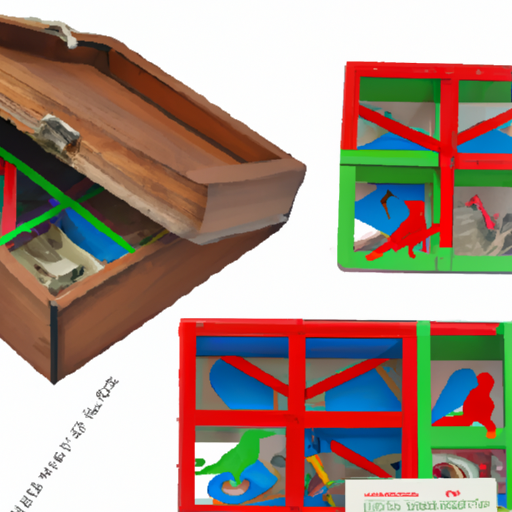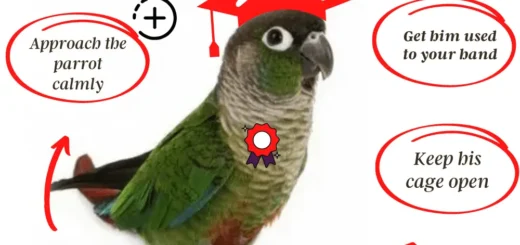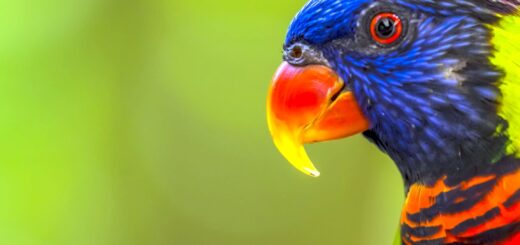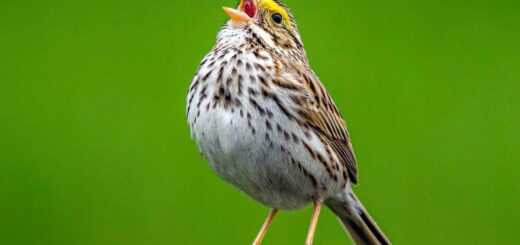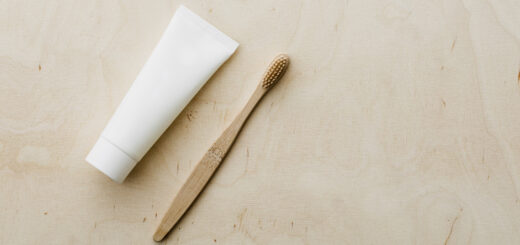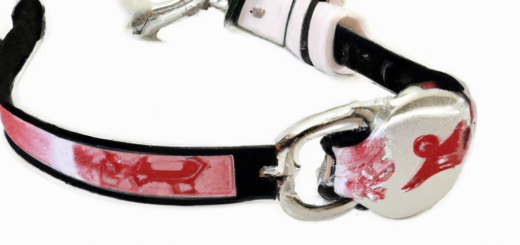Parrot Enrichment: Interactive Toys And Activities For Stimulating Your Bird’s Mind
If you want to keep your feathered friend engaged and happy, parrot enrichment is the way to go. By providing interactive toys and engaging activities, you can stimulate your bird’s mind and keep them entertained. In this article, we will explore the world of parrot enrichment and discover the best toys and activities to keep your bird mentally stimulated. So grab a cup of tea, sit back, and get ready to dive into the wonderful world of parrot enrichment!
Understanding Parrot Enrichment
Parrot enrichment refers to the process of providing various toys, activities, and environmental enhancements to meet the physical, mental, and social needs of parrots. It is crucial for parrot owners to understand the importance of enrichment in order to ensure the well-being and happiness of their feathered companions.
Why is parrot enrichment important?
Enrichment plays a vital role in meeting the natural instincts and cognitive abilities of parrots. In the wild, parrots engage in various activities such as foraging, flying, and socializing, which keep them physically and mentally stimulated. When parrots are kept as pets, they need to have these needs met through enrichment to prevent boredom, stress, and behavioral problems.
Benefits of parrot enrichment
Providing enrichment for your parrot offers numerous benefits. It helps prevent boredom and destructive behaviors such as feather picking, excessive screaming, and aggression. Enrichment also promotes physical exercise, mental stimulation, problem-solving skills, and better overall health. Additionally, it strengthens the bond between you and your parrot as you engage in interactive activities together.
Common behavior problems in parrots due to lack of enrichment
A lack of enrichment can result in various behavior problems in parrots. Boredom, frustration, and excess energy can lead to destructive behaviors like chewing on furniture, self-mutilation, excessive screaming, and aggression towards humans or other pets. Lack of mental stimulation can also result in a decline in cognitive abilities and overall well-being.
Choosing the Right Toys for Your Parrot
Selecting the appropriate toys for your parrot is crucial to ensure their safety and engagement. Here are some essential factors to consider when choosing toys for your feathered friend.
Safe materials and construction
When choosing toys, opt for those made from bird-safe materials like untreated wood, stainless steel, and non-toxic dyes. Ensure that the toys are constructed in a way that prevents entanglement or injury, such as securely fastened parts and smooth surfaces.
Appropriate toy size for your parrot’s beak
Choose toys that are the right size for your parrot’s beak. They should be large enough that it cannot be swallowed or get caught in their throat, but not so large that they cannot manipulate or interact with them.
Variety of textures, shapes, and colors
Provide a variety of toys with different textures, shapes, and colors to keep your parrot engaged and stimulated. Parrots are naturally curious and enjoy exploring different objects. Toys that encourage preening, shredding, and climbing are excellent options.
Interactive and puzzle toys
Including interactive and puzzle toys in your parrot’s toy collection is essential for mental stimulation. These toys provide a challenge and require problem-solving skills. Foraging toys, treat-dispensing toys, and puzzle feeders are great examples.
Rotate and introduce new toys regularly
To prevent toy boredom, regularly rotate toys and introduce new ones. This keeps your parrot’s environment exciting and prevents them from losing interest in their toys. Observing your parrot’s preferences and reactions to different toys will help you determine which ones they enjoy the most.
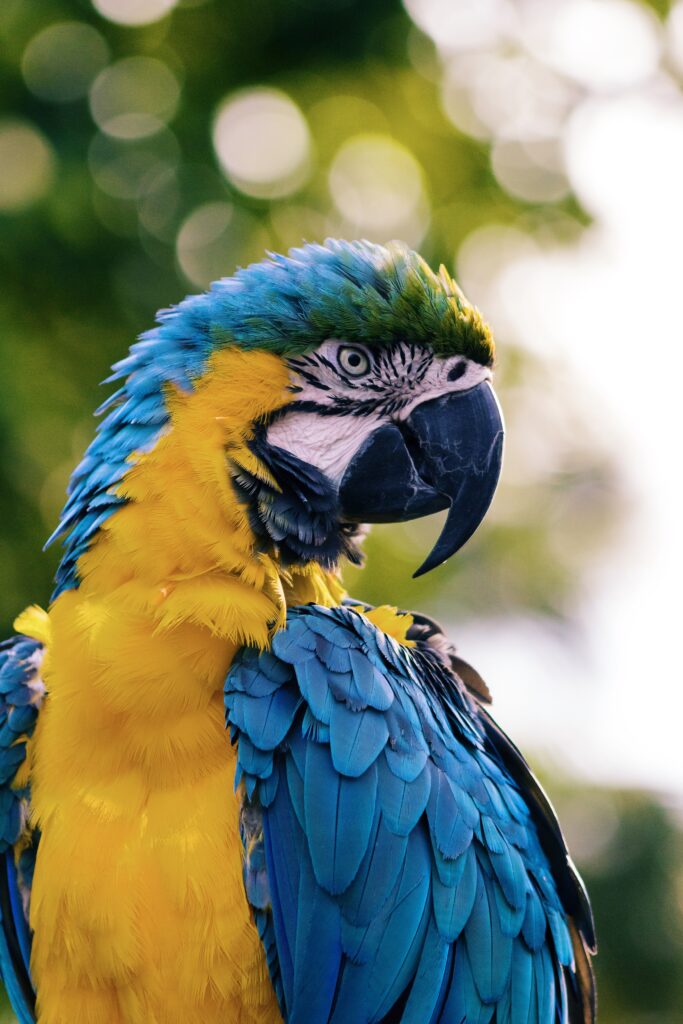
This image is property of images.unsplash.com.
DIY Parrot Toys
Creating homemade toys for your parrot can be a fun and cost-effective way to provide enrichment. However, it is important to take safety precautions and ensure the toys are suitable for your parrot. Here are some tips for making DIY parrot toys.
Safety precautions when making homemade toys
When making homemade toys, it is crucial to use bird-safe materials. Avoid toxic substances, small parts that can be swallowed, and sharp edges that can cause injury. Always supervise your parrot when playing with homemade toys to ensure their safety.
Simple and inexpensive DIY toy ideas
There are plenty of simple and inexpensive DIY toy ideas that can be made using common household items. For example, you can create a toy out of cardboard boxes, wooden blocks, or paper towel rolls. Knotting and braiding ropes can also provide an engaging chewing and preening experience for your parrot.
Using household items to stimulate your parrot’s creativity
Aside from making toys, you can also use various household items to stimulate your parrot’s creativity. Hide treats inside paper cups, provide paper bags for shredding, or offer a shallow bowl filled with water for splashing. These simple items can provide hours of entertainment for your feathered friend.
Introducing Interactive Activities
In addition to toys, incorporating interactive activities into your parrot’s daily routine is essential for mental stimulation and overall well-being. Here are some engaging activities you can introduce to your parrot.
Foraging toys and food puzzles
Foraging is a natural behavior for parrots, and providing foraging toys and food puzzles taps into this instinct. Hide treats or food inside toys or puzzle feeders to encourage your parrot to explore, problem-solve, and work for their food. This helps keep them mentally stimulated and prevents boredom.
Training and teaching new tricks
Parrots are highly intelligent and thrive on learning new things. Training your parrot to perform tricks or follow commands not only provides mental stimulation but also strengthens the bond between you and your feathered friend. Use positive reinforcement techniques and reward your parrot for their efforts.
Teaching your parrot to solve problems
Problem-solving activities are excellent for engaging your parrot’s cognitive abilities. You can introduce simple puzzles that require your parrot to manipulate objects or find hidden rewards. Gradually increase the complexity of the tasks as your parrot becomes more proficient.
Providing opportunities for social interaction
Parrots are social creatures and enjoy interacting with their human caregivers. Spend quality time with your parrot, talking, singing, and playing games together. You can also arrange playdates with other parrots to provide socialization opportunities.
Playing music and providing auditory stimulation
Parrots are known for their affinity for music. Play different genres of music for your parrot and observe their reactions. Some parrots enjoy singing along or dancing to the rhythm. Make sure the volume is not too loud to avoid causing discomfort to your feathered friend.
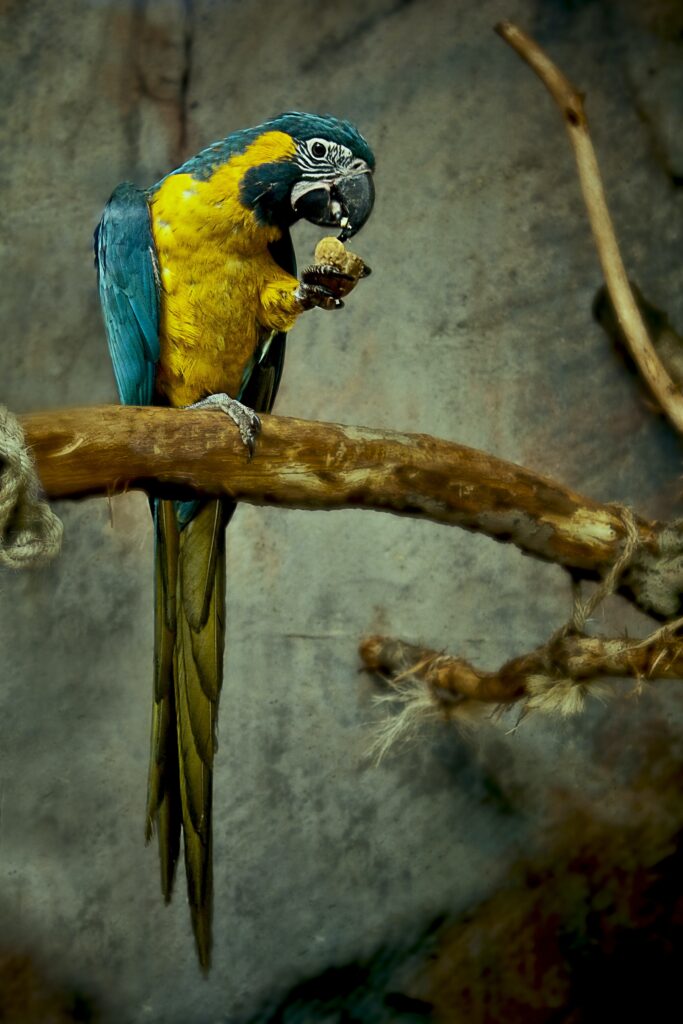
This image is property of images.unsplash.com.
Creating a Parrot-Proof Environment
Creating a parrot-proof environment is essential for the safety and well-being of your feathered companion. Here are some important considerations when setting up your parrot’s living space.
Bird-safe houseplants for environmental enrichment
Introducing bird-safe houseplants can provide environmental enrichment for your parrot. Plants such as spider plants, Boston ferns, and small palm trees can offer visual stimulation, provide hiding spots, and mimic a natural habitat for your parrot.
Avoiding toxic substances and hazards
Ensure that your parrot’s environment is free from toxic substances and hazards. Remove or secure any electrical cords, chemicals, cleaning agents, and toxic plants that can be harmful if chewed or ingested. Keep windows and doors closed or screened to prevent escapes or encounters with other pets.
Proper bird-proofing of your home
Bird-proofing your home is crucial to prevent accidents and injuries. Cover windows with blinds or curtains to prevent collisions, use safety latches on cabinets and drawers to prevent your parrot from accessing harmful items, and secure any loose wires or cords that may pose a strangulation risk.
Setting up perches and play areas
Providing a variety of perches and play areas in your parrot’s living space allows them to exercise, explore, and engage in natural behaviors. Include perches of different sizes and textures to promote foot health, and create areas for climbing, swinging, and playing.
Enrichment for Different Parrot Species
Different parrot species have varying needs when it comes to enrichment. Here are some considerations for enriching small, medium-sized, and large parrot species.
Enrichment considerations for small parrot species
Small parrot species like budgies and lovebirds require toys and activities that are suited to their size. Choose smaller toys with appropriate materials and textures for their beaks. Swings, ladders, and interactive toys are great options for small parrots.
Enrichment considerations for medium-sized parrot species
Medium-sized parrot species like conures and cockatiels benefit from a combination of physical and mental enrichment. Provide toys that offer climbing opportunities, as well as foraging toys and interactive puzzles. These parrots also enjoy chewing on toys made from safe woods or natural fibers.
Enrichment considerations for large parrot species
Large parrot species such as macaws and cockatoos require robust and durable toys that can withstand their powerful beaks. Provide toys that offer a variety of textures, such as hard plastics, metals, and woods. Swings, hanging toys, and destructible toys can help satisfy their natural behaviors.
Tailoring enrichment activities to suit your parrot’s abilities
It is important to tailor enrichment activities to suit your parrot’s abilities and preferences. Observe their behavior and responses to different toys and activities, and adjust accordingly. Some parrots may enjoy puzzle toys, while others may prefer physical activities like climbing and swinging.
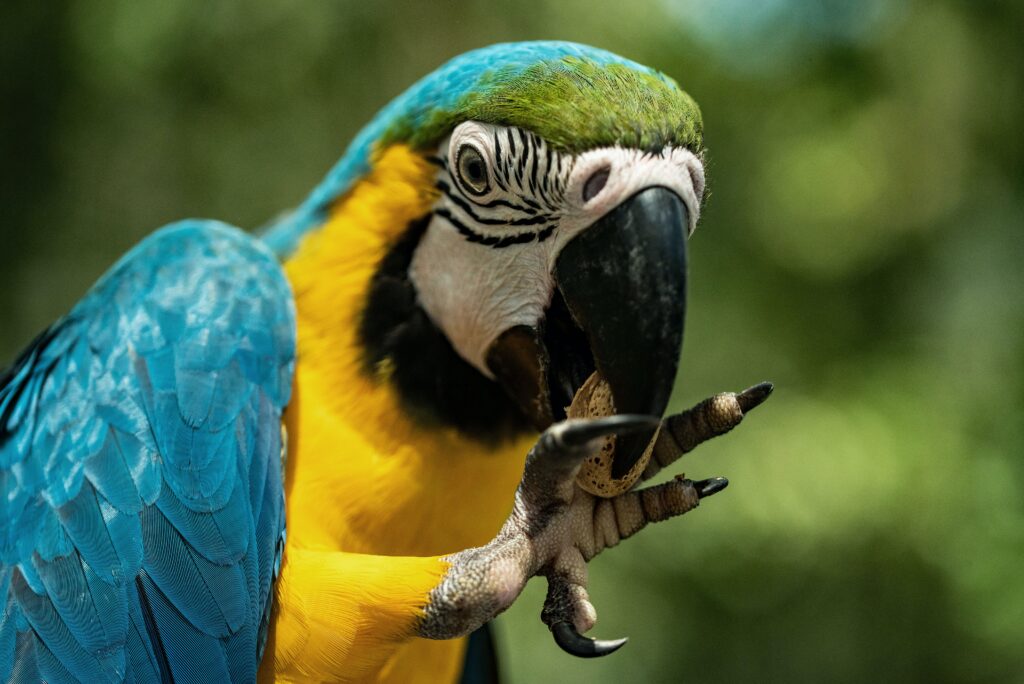
This image is property of images.unsplash.com.
Enrichment Alternatives When You’re Away
Even when you are not able to interact with your parrot personally, there are still ways to provide enrichment. Here are some alternatives for keeping your parrot mentally stimulated when you are away.
Interactive treat dispensers and puzzle feeders
Interactive treat dispensers and puzzle feeders are excellent alternatives for providing mental stimulation and rewarding your parrot when you are not around. These toys dispense treats or food gradually, requiring your parrot to problem-solve and work for their rewards.
Audio and visual stimulation devices for birds
Parrots enjoy listening to music, and there are audio devices specifically designed for birds. These devices play calming or entertaining sounds, mimicking a natural environment. Visual stimulation can be provided through bird videos or interactive toys with lights and moving parts.
Providing a variety of perching options
When you are away, it is important to ensure that your parrot has a variety of perching options. This allows them to change positions, exercise, and prevent foot problems. Include perches of different diameters and textures to provide comfort and stimulation.
Engaging a bird sitter or using bird daycare services
If you are away for an extended period, consider engaging a bird sitter or utilizing bird daycare services. These professionals have experience in caring for parrots and can provide mental and social stimulation during your absence. They can also ensure that your parrot’s needs are met and monitor their overall well-being.
Recognizing Signs of Enrichment Success
When enrichment strategies are effective, you will notice positive changes in your parrot’s behavior and well-being. Here are some signs that indicate your parrot is benefiting from enrichment.
Increased activity and exploration
Enriched parrots are more active and engage in exploratory behavior. They are curious, constantly investigating their environment, and seeking out new experiences. Increased activity levels indicate that your parrot is mentally stimulated and enjoying their enriching activities.
Improved problem-solving skills
Engaging your parrot in problem-solving activities can lead to the development of their cognitive abilities. If you notice that your parrot is becoming more proficient at solving puzzles or manipulating toys, it is a clear sign that their problem-solving skills are improving.
Reduced boredom-related behaviors
Enrichment helps prevent boredom, which manifests in various destructive behaviors. If your parrot’s destructive behaviors, such as excessive chewing or feather picking, decrease significantly, it indicates that their mental and physical needs are being met through enrichment.
Enhanced physical and mental well-being
Successful enrichment contributes to your parrot’s overall well-being. They should have a healthy appetite, maintain a sleek and well-groomed appearance, and exhibit energy and vitality. A mentally and physically stimulated parrot displays a positive balance of both mental and physical health.
Positive changes in social behavior
Enrichment activities that encourage social interaction between you and your parrot can strengthen the bond between you. If your parrot becomes more responsive, affectionate, and cooperative during interactive activities, it indicates that the enrichment is positively impacting their social behavior.
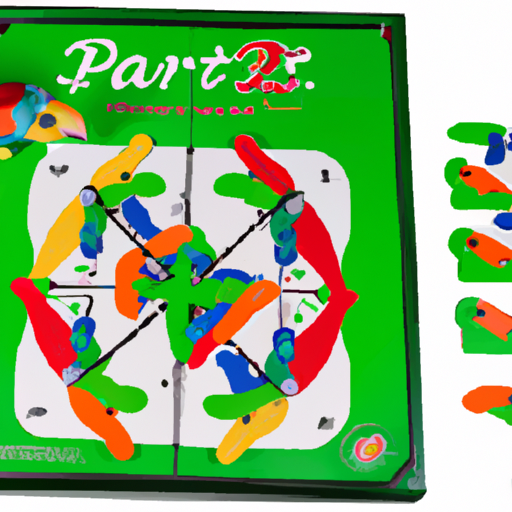
Addressing Enrichment Challenges and Concerns
Enrichment is not without its challenges and concerns, but with proper understanding and strategies, these obstacles can be overcome. Here are some common enrichment challenges and possible solutions.
Overstimulation and aggression
Some parrots may become overstimulated during enrichment activities, which can lead to aggression. If you notice signs of overstimulation, such as biting or excessive squawking, give your parrot a break and allow them to calm down. Gradually introduce enrichment activities in shorter durations and observe their response.
Lack of interest in enrichment activities
Not all parrots will immediately take to all types of enrichment activities. If your parrot shows disinterest, try different types of toys or activities that cater to their preferences. Observe what captures their attention and adjust accordingly. Offering a variety of options will help keep them engaged and interested.
Enrichment strategies for older or injured parrots
Older or injured parrots may have limitations when it comes to physical activities. Focus on mental enrichment through puzzles, problem-solving games, and gentle training sessions. Provide toys that are easy to manipulate and engage with. Consulting a veterinarian or avian behavior specialist can also help tailor enrichment activities to your parrot’s specific needs.
Consulting an avian behavior specialist
If you are facing persistent behavior problems or are unsure how to provide suitable enrichment for your parrot, it is advisable to consult an avian behavior specialist. These professionals have specialized knowledge and experience in understanding parrot behavior and can provide tailored advice and guidance.
Conclusion
Regular parrot enrichment is crucial for the well-being, mental stimulation, and happiness of your feathered friend. By providing appropriate toys, engaging in interactive activities, and creating a safe and enriching environment, you can ensure that your parrot’s physical and mental needs are met. Enrichment not only prevents behavior problems but also strengthens the bond between you and your parrot, resulting in a happy and mentally stimulated companion. So, invest in parrot enrichment and watch your feathered friend thrive!
